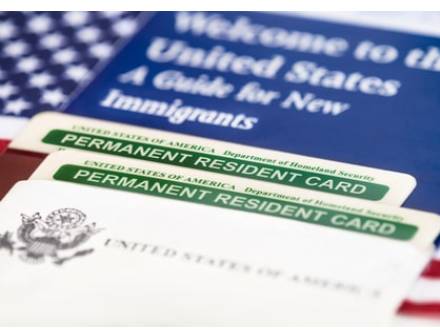Recent Blog Posts
T-Visa Certification in Texas: Working with Prosecutors
 For Texas non-citizen victims of human trafficking, safety and justice may depend on two very different systems working together. The state criminal courts that prosecute traffickers, and the federal immigration system that offers victims protection through a T-Visa, must work in tandem to allow human trafficking victims a safe haven.
For Texas non-citizen victims of human trafficking, safety and justice may depend on two very different systems working together. The state criminal courts that prosecute traffickers, and the federal immigration system that offers victims protection through a T-Visa, must work in tandem to allow human trafficking victims a safe haven.
The T-Visa (Form I-914) allows specific trafficking victims to remain in the U.S., obtain authorization to work, and eventually apply for a green card. However, proof that a person was the victim of trafficking and cooperated fully with law enforcement often originates from Texas police reports and court proceedings.
Coordinating these records can make or break a T-Visa case, and with the constant changes to immigration laws under the current administration, it is essential to have an experienced Plano, TX immigration lawyer.
Employers Beware: $100K H-1B Application Fee Explained
 The current administration recently imposed a $100,000 fee on H-1B visas in an effort to curb what it says is an "overuse" of the program. White House officials claim this new measure will incentivize companies to employ more American workers. A separate order established a new "gold card" immigration pathway that fast-tracks visas for specific immigrants in exchange for a staggering $1 million fee – or $2 million for a company sponsor.
The current administration recently imposed a $100,000 fee on H-1B visas in an effort to curb what it says is an "overuse" of the program. White House officials claim this new measure will incentivize companies to employ more American workers. A separate order established a new "gold card" immigration pathway that fast-tracks visas for specific immigrants in exchange for a staggering $1 million fee – or $2 million for a company sponsor.
The $100,000 fee for H-1B visas will almost certainly have a significant impact on industries that heavily rely on H-1B workers. Immigration policies are changing rapidly; those who want to come to the U.S. legally require a legal advocate who keeps up with all these changes. If you were planning on obtaining an H-1B visa, a Plano, TX immigration lawyer can help you understand how these new rules may affect you.
Driving Without a License: Immigration Consequences in Texas
 For many undocumented immigrants in Texas, the everyday tasks that many of us take for granted (driving to work, taking our children to school, running errands) can come with significant legal risks. Unlike some states (like Illinois), Texas does not issue driver’s licenses to undocumented residents.
For many undocumented immigrants in Texas, the everyday tasks that many of us take for granted (driving to work, taking our children to school, running errands) can come with significant legal risks. Unlike some states (like Illinois), Texas does not issue driver’s licenses to undocumented residents.
This leaves thousands of working people with a tough choice: risk driving without a license or struggle to survive without being able to drive. Driving without a driver’s license in Texas as an undocumented immigrant is much more serious than a mere traffic violation. You can be criminally charged and face jail time, as well as serious immigration consequences, including deportation.
If you do not have lawful status in the United States, it is crucial that you understand how a simple traffic stop can quickly spiral into an immigration nightmare. It can be beneficial to consult with an experienced Plano, TX family immigration lawyer before you find yourself in such an untenable situation.
Relocating Within Texas During an Immigration Case
 Immigration cases can take months or even years to move through the system. Under the current administration, those times will likely increase. While families wait on immigration decisions, they may need to move within the state for a work opportunity, more affordable housing, or better schools for the children. Unfortunately, relocating with a pending immigration case is not as simple as packing your things and signing a new lease.
Immigration cases can take months or even years to move through the system. Under the current administration, those times will likely increase. While families wait on immigration decisions, they may need to move within the state for a work opportunity, more affordable housing, or better schools for the children. Unfortunately, relocating with a pending immigration case is not as simple as packing your things and signing a new lease.
The U.S. immigration system requires applicants to follow very strict procedures when changing addresses. Failing to comply with these procedures could delay an immigration case even further or could even place the entire case in jeopardy. It can be extremely beneficial for you to speak to a knowledgeable Plano, TX immigration lawyer who can help you sort out the required process for moving.
Why Does an Address Matter in Immigration Cases?
Under U.S. Citizenship and Immigration Services rules, immigrants with pending applications, temporary visa holders, and green card holders are legally required to notify USCIS of any address change. Important notices and documents related to your case are typically sent to the current address on file, including:
Texas Educators Say Law Bans Immigration Enforcement in Schools
 As the countdown to the new school year begins, in school districts across the state of Texas, there are hundreds, if not thousands, of children who lack legal status. It is a national right that all children in the United States are entitled to a public education, regardless of their citizenship or immigration status - or is it?
As the countdown to the new school year begins, in school districts across the state of Texas, there are hundreds, if not thousands, of children who lack legal status. It is a national right that all children in the United States are entitled to a public education, regardless of their citizenship or immigration status - or is it?
The enhanced efforts by the current administration to remove or detain undocumented persons across the nation, with courthouse raids and ICE agents at job sites and in neighborhoods, have left educators wondering whether there will be raids in schools. Federal law has historically prohibited ICE agents from entering school grounds, but it is not a significant leap to imagine such an occurrence.
Teachers in Texas schools (and all schools in the U.S.) believe their job is to ensure every student receives the best education possible – and are hoping that undocumented immigrant raids never become a part of the public school experience. If you are a parent worried about your child’s undocumented status, now is the time to speak to an experienced Plano, TX immigration lawyer about your status and your rights.
Texas Hospitals Now Required to Ask About Immigration Status
 Governor Abbot signed an executive order almost a year ago (August 2024) that required hospitals to ask every patient their immigration status. The order was scheduled to begin in November 2024. The first set of data was released by the Texas Health and Human Services Commission in March, covering a four-month period from November 1 to February 28. During those months, approximately 108,000 undocumented patients sought care in Texas hospitals.
Governor Abbot signed an executive order almost a year ago (August 2024) that required hospitals to ask every patient their immigration status. The order was scheduled to begin in November 2024. The first set of data was released by the Texas Health and Human Services Commission in March, covering a four-month period from November 1 to February 28. During those months, approximately 108,000 undocumented patients sought care in Texas hospitals.
It is important to note that this number was a very small percentage of all patients treated by those same hospitals – only about 2.3 percent of all patients were undocumented. It is also important to know that while Texas hospitals are now required to ask about immigration status, patients are not required to answer, and about 12.9 percent declined to answer the question. Hospitals closest to the border, such as those in Webb County, had the highest share of undocumented patients.
Can You Still Get a Green Card After a Texas Illegal Entry?
 Immigration issues have become much more uncertain in the past few months. Perhaps you came to the United States as an undocumented immigrant, and now wonder whether there is any way you can get a green card. Crossing the border into Texas as an undocumented immigrant can make the path to legal residency much more complicated, but not impossible in every case.
Immigration issues have become much more uncertain in the past few months. Perhaps you came to the United States as an undocumented immigrant, and now wonder whether there is any way you can get a green card. Crossing the border into Texas as an undocumented immigrant can make the path to legal residency much more complicated, but not impossible in every case.
While you may be worried that your chance of obtaining a green card is permanently lost, there are still some options for adjustment of status, waivers, or, in some cases, consular processing. Before giving up entirely on your dream of obtaining a green card, it is important to speak to a knowledgeable Plano, TX immigration attorney. Unlawful entry can certainly create legal hurdles, but your attorney can assess your unique situation to determine whether options exist.
Master Hearing, Individual Hearing, or Bond Hearing?
 Navigating the immigration court process can be confusing, and in today’s world, when immigrants are being arrested as they leave their hearing, the process is even more fraught with confusion and fear. There are essentially three types of immigration hearings: master hearings, individual hearings, and bond hearings.
Navigating the immigration court process can be confusing, and in today’s world, when immigrants are being arrested as they leave their hearing, the process is even more fraught with confusion and fear. There are essentially three types of immigration hearings: master hearings, individual hearings, and bond hearings.
Each of these hearings plays a specific role in removal proceedings, and it is important to understand the purpose of each hearing and what is at stake. This can help you better prepare for your hearing. Having an experienced Plano, TX immigration lawyer helping you through the process can make a difference, not only in how you approach your hearing but in the outcome as well.
How Will You Know Whether You Have an Immigration Hearing?
There are two types of notices you could receive regarding an immigration hearing. The first is a Notice to Appear (NTA). The NTA contains the time, date, and place of the hearing. If, for some reason, you have misplaced the NTA, you can call the Immigration Court Hotline. The other type of notice is a Notice of Hearing in Removal Proceedings. This document also lists the date, time, and place of your hearing while also explaining the purpose of the hearing. Free attorneys are not provided to those in Immigration Court proceedings.
Texas Halts In-State Tuition for Undocumented College Students
 Mere hours after a federal lawsuit targeted Texas for allowing undocumented students to qualify for in-state tuition, the 24-year-old law was overturned. The state of Texas agreed with the federal government’s demand that it halt the practice that had been in place for over two decades after the DOJ announced it would sue the state for the policy. The Texas Attorney General took credit for the outcome, calling the policy "discriminatory and un-American."
Mere hours after a federal lawsuit targeted Texas for allowing undocumented students to qualify for in-state tuition, the 24-year-old law was overturned. The state of Texas agreed with the federal government’s demand that it halt the practice that had been in place for over two decades after the DOJ announced it would sue the state for the policy. The Texas Attorney General took credit for the outcome, calling the policy "discriminatory and un-American."
The DOJ argued that universities cannot provide benefits to undocumented individuals that they do not provide to every U.S. citizen. This argument generally makes little sense, as all states offer in-state tuition to those who live in the state. In-state tuition in Texas is not afforded to students in California, and vice versa.
Texas was, surprisingly, the first state to offer in-state tuition to undocumented immigrants. Recently, Senate Bill 1798 also sought to repeal the law but stalled before reaching the floor for a vote. The bill would have allowed universities to withhold the diplomas of undocumented immigrants until they paid the difference between in-state and out-of-state tuition. If you have questions regarding this latest decision, speak to an experienced Plano, TX immigration lawyer.
What Impact Will Divorcing My Immigrant Spouse Have?
 More than 400,000 U.S. citizens marry foreign nationals each year, petitioning for them to obtain permanent residency status. Foreign-born spouses of U.S. citizens are immediate family members and, therefore, exempt from statute limitations under current federal immigration laws.
More than 400,000 U.S. citizens marry foreign nationals each year, petitioning for them to obtain permanent residency status. Foreign-born spouses of U.S. citizens are immediate family members and, therefore, exempt from statute limitations under current federal immigration laws.
Marrying a U.S. citizen could be the quickest way for a foreign-born individual to obtain a green card, although there are many safeguards in place to stop anyone who might marry a U.S. citizen only to get a green card. One of those safeguards is a rigorous interview for citizens and noncitizens in these situations.
But what happens when a marriage between a U.S. citizen and a foreign-born individual ends in divorce? Will divorce affect the immigration status of a noncitizen? If you are facing a similar situation, it is important that you speak to a knowledgeable Plano, TX immigration attorney who can help you determine what your options are.






